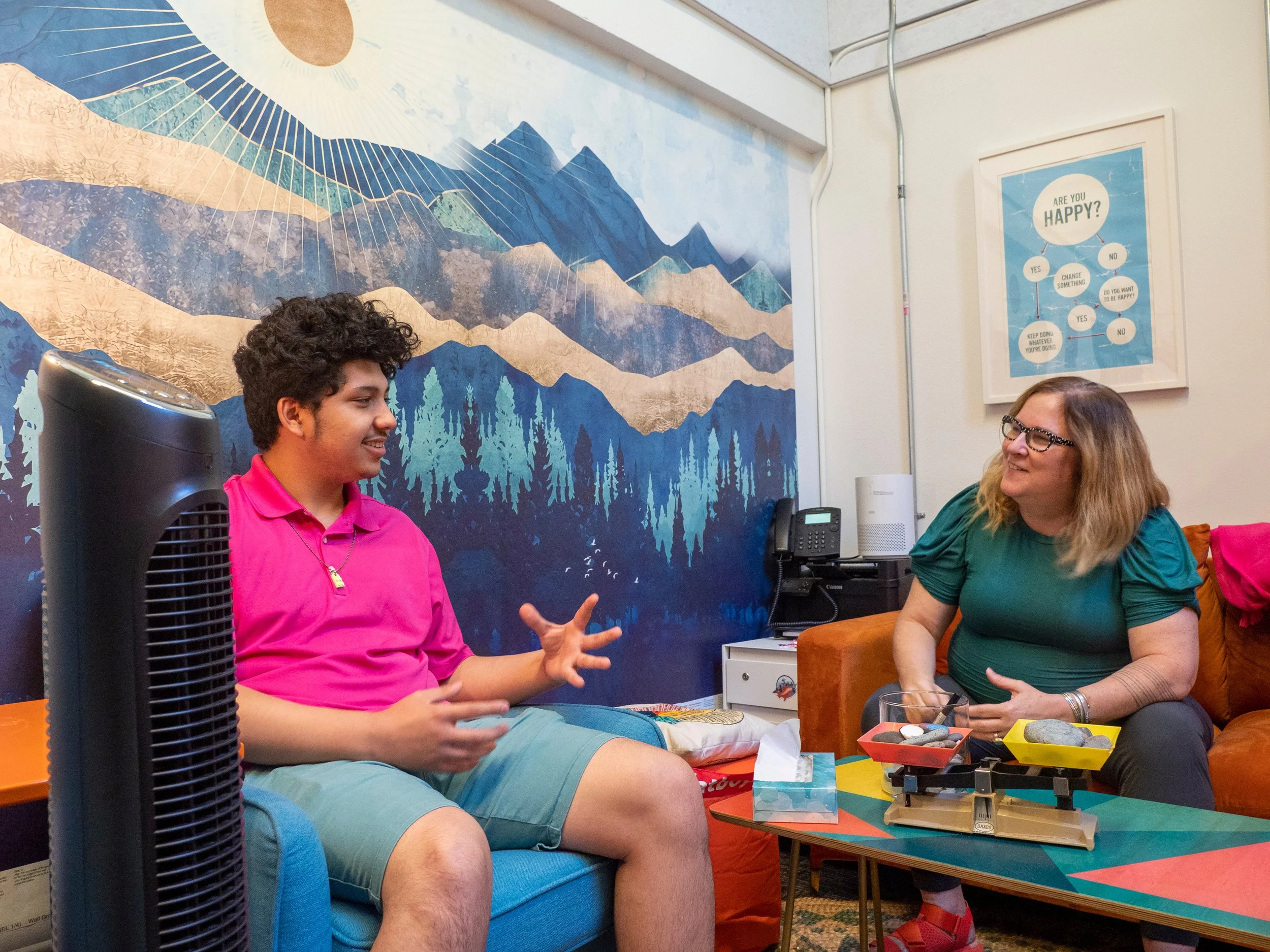Advising vs. Advice-ing
By Nance Leonhardt
Many of us, myself included, have a phantom memory of homeroom. We may remember coming in, bleary eyed to hear the daily bulletin and to recite the Pledge of Allegiance. Sophomore-me remembers borrowing senior Raven Witherspoon’s black Wet n’ Wild eyeliner for a daily Goth makeover. I don’t remember engaging much in homeroom beyond a curt, “Here” response to role-call. The landscape of homeroom has shifted much in the decades since The Cure was putting out hits. Today most schools call this space, as we do at The Downtown School, Advisory.
Advisory work is relational. A strong advisory program creates a safe place for students to vet their concerns about school, peer dynamics, and future ambitions. An advisor is a student’s advocate and challenger, protected by a degree of objectivity not always possible with parents, instructors, or coaches. Facilitated effectively, an advising group can become a community sharing common goals and collective growth. Anyone who is raising a teenager knows advice-giving rarely works. Advising is not giving a solution, it’s asking the questions to help someone contemplate their own solutions and autonomy to enact change in their own life.
I’ve been involved with many advisory models throughout my career and have devoted much of my professional development to learning best practices for shaping strong advising programs. Research is clear that an ongoing relationship with a single advisor over time yields the best results. Connecting with someone who helps hold your history, your patterns and quirks, and who can call you out when you drift off course is where the magic lies in most long-term relationships.
The advisor-advisee role is no exception.
One of the widely debated topics in advisory pedagogy is how advising groups should be composed. Should advisories be grouped by age, interests, personality traits, or even star signs? There is an idea that exists out there that having advisories composed of older and younger members will serve students best. The older ones learn to look after the younger members and share their wisdom. The younger ones feel safer asking questions to mentors closer in age to them than the adults guiding the advisory. This is the model that exists in most mentorship programs from Big Brother/Big Sisters, to summer camps, to sports teams.
However, in my years working with multi-age advisory systems, I continued to notice wide variance between advising clusters and even within my own advisory groups year-to-year. Some years my upperclassmen were brilliant. They spent months thinking about how they would like to set the tone for the subsequent school year when they stepped into leadership of our advisory. They planned bonding events and took time to walk and talk with the new folks who would join our ranks each fall. Yet other years, I was hard pressed to get a word out of the 17-year-olds who would sit on the periphery of the room, responding to group conversations in grunts and shrugs. What our advising program lacked was mentoring for the mentors.
Advising based on the premise of peer-peer advice giving doesn’t work practically or systemically. Unless you have a strong mentorship development program like LINKS crew or similar, students skilled with what they need to become good at mentoring is really the luck of the draw from a mixed-advising standpoint. Furthermore, when you put your older students in the role of mentoring the younger ones, where do the older students’ needs get met? The concern about making friends with new people as a ninth grader is very different from a senior who may be trying to repair a rift with a peer group or preparing to say goodbye as they leave for college.
This year we pivoted to grade-level advising in response to these concerns. We wanted to revamp our program to serve the unique developmental and social-emotional needs of each grade level. We wanted to empower each class coming through the ranks with the tools to connect, hold one another accountable, and grow in their own leadership capacity. Research supports the premise that when peers feel safe with one another, they feel safer to seek help when they don’t understand something in the classroom. While our school is small and our program is relatively lean, we have to be focused heavily on the business of academic work during content-area classes. The sense of safety and connectedness needed a place to be developed and nurtured for each grade level. Switching to grade-level advisories was a no-brainer place to support that work. Most importantly, we wanted to emphasize and refine what we do best, know our individual students well and engage them in relevant and relational advising work that helps them become the best versions of themselves they can be.



